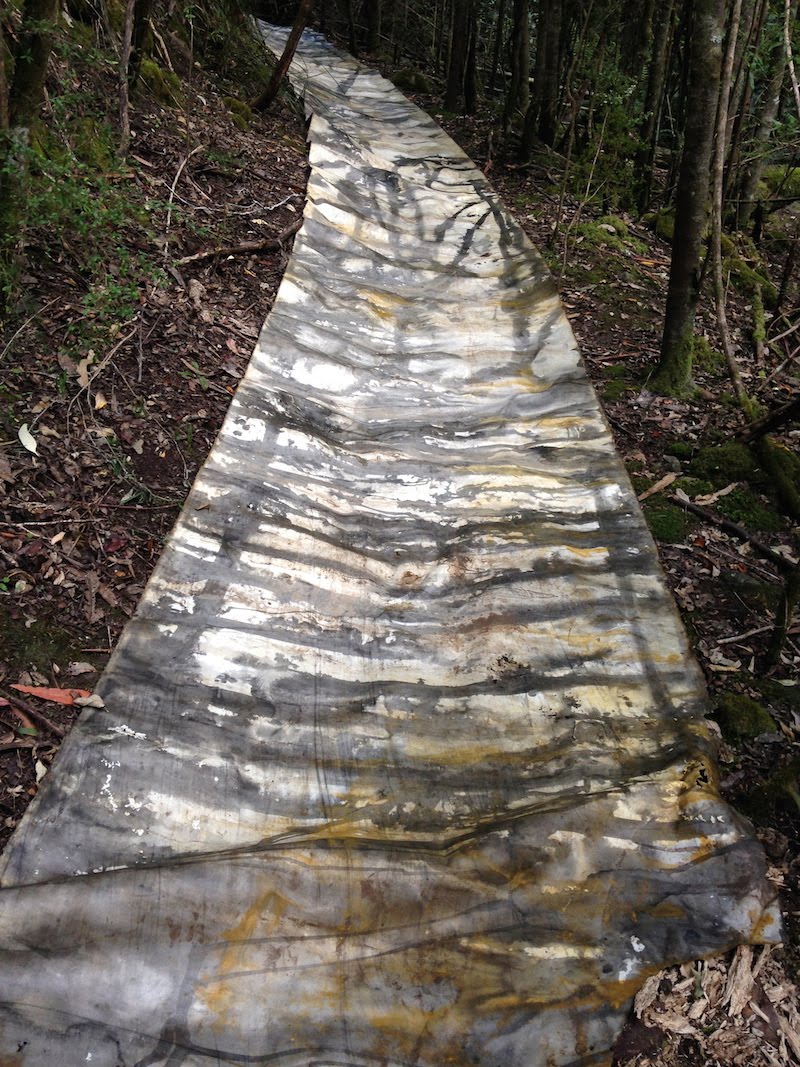Traces and Erasures continues the dialogue with Gundaroo Common exploring the subtle shifts and glimpses of past
and present revealed by the land. The
paper gradually accrues a history of events and begins to make connections
between people and place. The presence of the rhizomes below the paper start to dominate and energize the work, breaking the ground and making it fertile.
The series of works explore the possibility of an inspirited site. The pre-historian John Mulvaney suggests that the concept of an inspirited landscape may be one of the greatest gifts that indigenous people have given to civilization. It is important for settler and migrant Australians to find their way in the land, to find a spiritual connection to the land and accept the rights and responsibilities that go with that.
During the process of drawing the world becomes unstable, it is in the process of flux, particles change states from water to solid, solid to gas, ground to image, breath to mark. There is a constant shifting ground as I search for a new way to live in this land. By rubbing the land and caressing it with my fingertips I immerse myself in the environment, searching with my body what the land can reveal to me. I am going below the horizon, challenging the vertical, objective view offered by Landscapes. The Land is not secure, I feel nausea and anxiety about my place in the world so I sit and learn by immersing myself in the land, both physically and metaphorically. By having finger marks and dirt I aim to get the viewer back in to the soil, to remember its feel, smell, texture and what it is like to play with it. I want the work to be its own reality, the event is happening now at the time of viewing. The artist, the work and the viewer are for a few moments linked in an event, a relationship in which we are all linked to the country. The multivalent shape-shifting marks link us body and spirit to the Land.
The series of works explore the possibility of an inspirited site. The pre-historian John Mulvaney suggests that the concept of an inspirited landscape may be one of the greatest gifts that indigenous people have given to civilization. It is important for settler and migrant Australians to find their way in the land, to find a spiritual connection to the land and accept the rights and responsibilities that go with that.
During the process of drawing the world becomes unstable, it is in the process of flux, particles change states from water to solid, solid to gas, ground to image, breath to mark. There is a constant shifting ground as I search for a new way to live in this land. By rubbing the land and caressing it with my fingertips I immerse myself in the environment, searching with my body what the land can reveal to me. I am going below the horizon, challenging the vertical, objective view offered by Landscapes. The Land is not secure, I feel nausea and anxiety about my place in the world so I sit and learn by immersing myself in the land, both physically and metaphorically. By having finger marks and dirt I aim to get the viewer back in to the soil, to remember its feel, smell, texture and what it is like to play with it. I want the work to be its own reality, the event is happening now at the time of viewing. The artist, the work and the viewer are for a few moments linked in an event, a relationship in which we are all linked to the country. The multivalent shape-shifting marks link us body and spirit to the Land.





